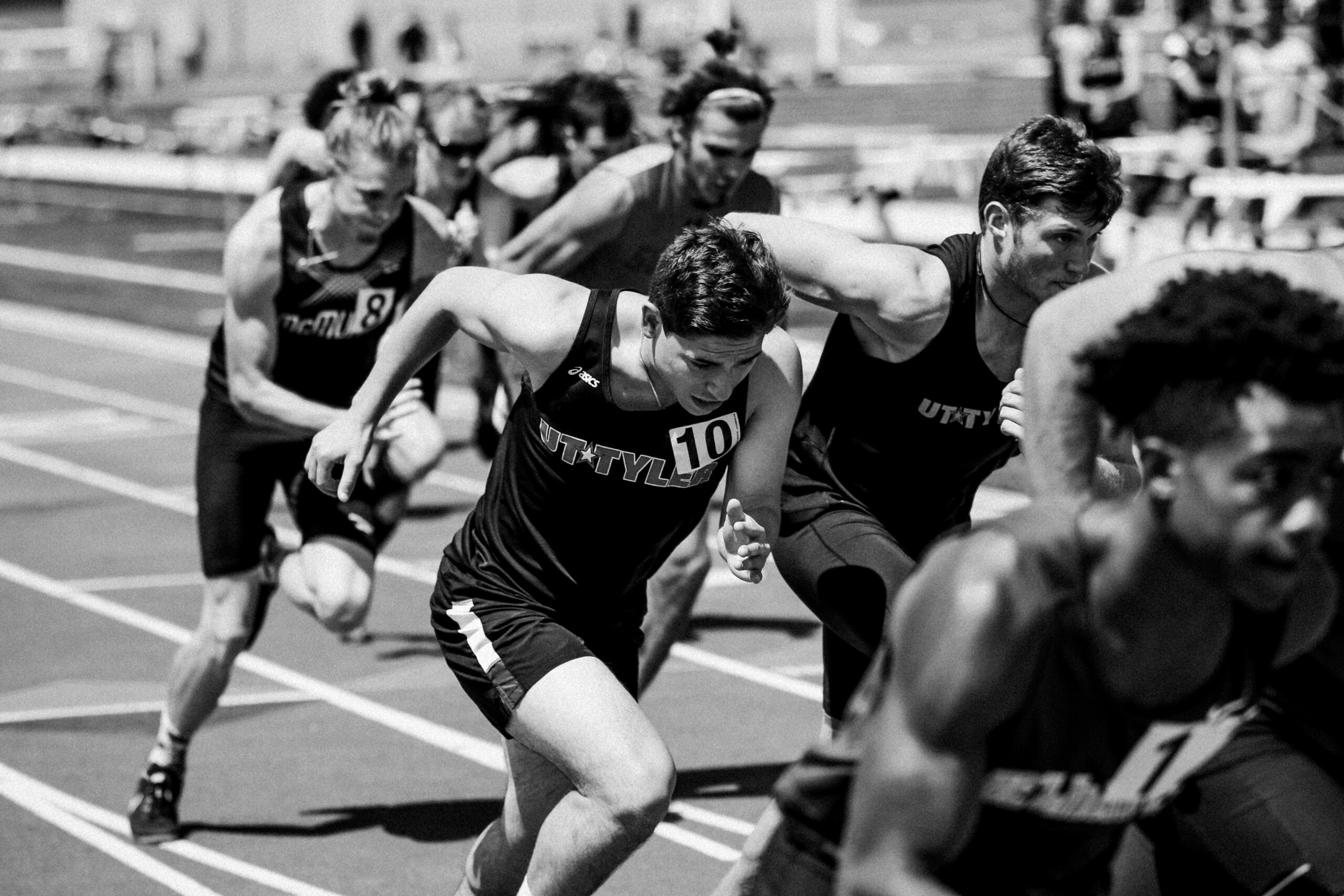In yesterday’s post, I pointed out how Dante’s Paradise helps one see the primacy of love. The arete of love is eternal, while all of the records, championships, trophies and praise in sport will pass away. In this final post, I will address the implications that the eternal love of God, to which Dante points us, has for the practice of sport. Love in sport is not affection, permissiveness, or sentimentality; it has specific contents…
What then might the theological virtue of love look like in sport? Paraphrasing the opening of St. Paul’s famous soliloquy on love in the thirteenth chapter of I Corinthians would be a good beginning. There, as you know, Paul starts by pointing out the futility of loveless achievements, up to and including the vapidity of a loveless faith:
If I speak in the tongues of men or of angels, but do not have love, I am only a resounding gong or a clanging cymbal. If I have the gift of prophecy and can fathom all mysteries and all knowledge, and if I have a faith that can move mountains, but do not have love, I am nothing. If I give all I possess to the poor and give over my body to hardship that I may boast, but do not have love, I gain nothing. (13:1-3, NIV)
By logical extension, we could add “if I win a World Cup, or a gold medal, or break a world record, but have not love, I have achieved nothing.” Paul’s point is, like Solomon’s1 in Ecclesiastes, obvious. Absent love, “all is vanity” (1:2, KJV). After acknowledging the primacy of love, Paul then gives the attributes of love:
Love is patient, love is kind. It does not envy, it does not boast, it is not proud. It does not dishonor others, it is not self-seeking, it is not easily angered, it keeps no record of wrongs. Love does not delight in evil but rejoices with the truth. It always protects, always trusts, always hopes, always perseveres (I Corinthians 13:4-7, NIV).
What seems clear from such a list is that love in sport is in short supply, or at least, in no danger of running any kind of surplus. How, then, might followers of Christ bring such a surplus to sport?2 Here is how I would begin applying the attributes of love to sport. In doing so, I will ignore those which I take to be self-evident, such as “not boasting” and focus on three whose application to sport seems to me to be less obvious, but particularly apropos.
The three which I’d like to examine more closely are “patience”, “kindness”, and “not delighting in evil.” One important way to apply patience to contemporary sport regards combating the utilitarian win-at-all cost mindset, especially as regards youth sports. As former ESPN reporter Tom Farrey makes clear in his book Game On, the mania among adults and parents in youth sport for winning, prestige, and “trophy kids” drives a cutthroat attitude in club and even recreational settings, where kids are evaluated, sifted, benched, cut, and discarded too soon.
As a result, the twin purposes of any good youth sports program – skill development and fun – are lost. Moreover, such sifting is actually counter-productive at identifying and developing the most talented, because children grow, biologically, cognitively, emotionally, and kinesthetically at different rates. As Farrey points out, while citing research from Michigan State University: “Jumping ability for all boys continues to improve through age 19 (age 16 for girls). So predicting the future for any of these athletes before the end of puberty is a fool’s game, especially in basketball with its bias for height.”3
Of course, the point holds generically as well. Casting aside an “eight-year-old” on the basis of their current running, kicking, or throwing ability, is just as fraught with inaccuracies as it is for jumping ability or height. Nevertheless, in the mad rush for wins and prestige, it is an all-too-common occurrence. “Patience” in this context would therefore mean focusing on long-term development and cultivating a love for the game, rather than “wins” and short-term competitive success. Moreover, if my prior speculations4 about the inherent human need for moving well and moving often are on target, a lack of patience in youth sport is vicious, not only because it prematurely eliminates opportunities, but also because it harms human well-being.
Admitting this truth does not require one to deny obvious distributions of talent, skill, and ability. Those realities should not be ignored. Elite opportunities should be made available, when and where appropriate, for all those with elite skill. However, the point of patience is to love others, by prioritizing skill development, fun, and well-being over a ceaseless drive towards short-term competitive gain and snap judgments of talent or potential.
In the same manner, “kindness” in sport would be about recognizing and then advocating for, the universal need for and universal joy found in, kinesthetic skills. When well organized, when skill is cultivated and exhibited, “games, play and sport” are a deep well of delight. Running, kicking, swimming, and dancing skillfully – for instance – make for a better and more meaningful life. This is true whether one is an elite performer or not.
Typical skills are an important component of human well-being. Think of the liberation found as a toddler learns to walk. Think of the joy in a child’s face the first time she scores a goal, gets a hit, or makes a basket. Think of the swell of pride (and relief) a parent feels when his child learns to ride a bike, or swim a lap, or dance a full routine. These things are beautiful, even if the one achieving them is not better than anyone else at them! These things are meaningful even if no one else is watching!5
Kindness in sport, therefore, as an expression of the theological virtue of love, is about allowing for this deep need among our fellow humans to be fulfilled. Male or female, rich or poor, black or white, young or old, everyone, on account of being human, needs access to the facilities, training, and equipment to learn how to swim, dance, play, and exercise well.
At a practical level, then, kindness means pouring appropriate resources, as well as the same passion and care, into physical education, community recreation, intramurals, and university club sports that we do for our elite athletes. In America, at least, this is not happening. In fact, it is quite the opposite. For instance, during the 2019-2020 academic year, the University of Houston put a little over $300,000 dollars into campus recreation for the general student body, while providing over $34 million in direct institutional funding to the athletics department.6 The centrality of embodiment to human being, means such failures are not a small matter. Indeed, failing in this way is vicious in just the way St. Paul described, for as C.S. Lewis pointed out in the Weight of Glory:
All day long we are, in some degree, helping each other to one or other of these destinations [of heaven or hell]. It is in the light of these overwhelming possibilities, it is with the awe and the circumspection proper to them, that we should conduct all our dealings with one another, all friendships, all loves, all play, all politics. There are no ordinary people. You have never talked to a mere mortal. Nations, cultures, arts, civilization-these are mortal, and their life is to ours as the life of a gnat. But it is immortals whom we joke with, work with, marry, snub, and exploit-immortal horrors or everlasting splendours.7
Human lives have eternal consequence, while the things of this world are transient (Matthew 6:19-21; 2 Corinthians 4:18). Prudence demands, therefore, that our neighbors are always and everywhere more important than any of the temporal goods of the world.
Finally, let me briefly consider “not delighting in evil.” Obvious examples here would be the common tendency to use a jingoistic “my country right or wrong attitude” towards the misbehavior of athletes, teams, or countries of which we are fans, citizens, or partisans.8 Let me, therefore, focus on a more subtle evil, the commodification of athletes. This inhuman vice takes place at commercial, competitive, and metaphysical levels. In American sport, this commodification is so entrenched that it is often not noticed, and is even at times celebrated.
The commercial and competitive commodification of athletes is made manifest in myriad ways. Here are but a few. Players can be traded like meat. Leagues (such as the NFL) are tempted to deny hard truths that threaten commercial gain, such as the dangers of long-term brain damage in American football.9 Seasons and playoffs (that is, demands on athletes) get longer and longer.10 Finally, although Division I intercollegiate athletics generates billions of dollars a year for the NCAA and its member schools, the athletes who generate that revenue are alleged to be best understood as “amateurs,” and every attempt to recognize them as employees is fought tooth and nail by the leaders of intercollegiate athletics 12
At the metaphysical level, the fight is being played out in the background over big data and athlete tracking technology,13 over genetic engineering14 over transhumanism (of which transgenderism is simply a species) 15, and over human nature itself.16 The fight over human nature focuses on whether the human person is best understood as a subject or an object. That is, the dispute is over whether our bodies, which are “necessarily subject to vulnerability, dependence, and finitude,”17 are an irreducible aspect of our selves, or whether they are just one more possession we have, which we own like a “consumer good,” to be manipulated, altered, and upgraded as we desire.18 The bottom line is that to avoid the vice of “delighting in evil,” the commercial, competitive, or metaphysical abuses created by the commodification of athletes must not be endorsed, tolerated or ignored. Love demands no less. As Pope Benedict XVI so wisely saw, at the end of time, when Christ asks each of us about our treatment of the “least of these” (Matthew 25:31-46): “the Judge does not ask what kind of theory a person has held about God and the world. He is not asking about a confession of dogma, solely about love. That is enough, and it saves a man. Whoever loves is a Christian.”19 We who claim his name would do well to remember this fact and struggle as best we can, relying on the grace and mercy of God, to live accordingly. All true sporting excellence, all arete, is the result of, and ought to be conducted in the light of, this truth. Dante’s poetic account of the Triune God in the Paradiso reminds us of this reality. Love is and will be, “in the fullness of time” (Galatians 4:4, KJV), the “whole picture” and the “big picture,” the beginning and end of all things.
Footnotes
- Though traditionally ascribed to Solomon, the authorship of Ecclesiastes is a matter of dispute.
- Pope Benedict XVI calls this surplus “superabundance” and describes the resulting generosity this way: “Rather the Christian is the one who simply seeks what is good, without any calculation…he is the person who knows that he does have failings and is generous with God and with other people because he knows how much he depends on the generosity of God and his fellowmen. The generosity of someone who knows he is in debt to everyone else, who is quite unable to attempt to maintain a correctness that would allow him to make strict demands in return…” Benedict XVI. Credo, 14-15.
- Tom Farrey, Game On: The All-American Race to Make Champions of our Children, (New York, ESPN Books, 2008), 161.
- See the prior post in this series entitled The True Race Part II: Reality, Appearances, Humility, and the Primacy of Love.
-
Gregg Twietmeyer and Tyler Johnson, “The Meritocracy Trap and Kinesiology”, Kinesiology Review, advance online publication, 2022, 8, https://doi.org/10.1123/kr.2022-0015.
- Hadrian Barbosa, “Campus recreation asks SFAC to maintain budget”, thedailycougar.com, October 26, 2018. https://thedailycougar.com/2018/10/26/campus-recreation-budget-sfac/ and Jhair Romero, “UH athletics annual spending skyrockets by $16M after big year”, February 28, 2020. https://thedailycougar.com/2020/02/28/uh-athletics-spending-skyrockets-profit/.
- C.S. Lewis, The Weight of Glory (New York: Harper Collins, 2001), 47.
- See, for instance: Amanda Christovich, “How Michigan Turned a Sign-Stealing Scandal Into a Successful Marketing Ploy,” frontofficesports.com, January 9, 2024, https://frontofficesports.com/how-michigan-turned-the-sign-stealing-scandal-into-a-successful-marketing-ploy/
- Mark Fainaru-Wada and Steve Fainaru, League of Denial: The NFL, Concussions, and the Battle for the Truth, (New York: Crown Archetype, 2013).
- See, for example: Michael Bailey, “Are you not entertained? The diminishing returns of too much football.” theathletic.com. June 23. 2023, https://theathletic.com/4622106/2023/06/24/is-too-much-football-impacting-its-entertainment/.
- A seminal source here is: Taylor Branch, “The shame of college sports,” theatlantic.com. October. leaders of intercollegiate athletics.11https://www.nytimes.com/athletic/6416474/2025/06/12/johnson-vs-ncaa-case-college-sports-employees/
- See, for example: Matthieu Quidu and Brice Favier-Ambrosini, “Why some amateur athletes are giving up on smartwatches”, theconversation.com, January 1, 2024, https://theconversation.com/why-some-amateur-athletes-are-giving-up-on-smartwatches-216979.
- See, for example, the following competing voices: Michael J. Sandel, “The case against perfection.” theatlantic.com. April. 2004, https://www.theatlantic.com/magazine/archive/2004/04/the-case-against-perfection/302927/ and W. Miller. Brown, “The case for perfection,” Journal of the Philosophy of Sport, 2009, 36:2, 127-139, https://doi.org/10.1080/00948705.2009.9714752.
- Mary Harrington identifies one of the key tenets of transhumanism as “Meat Lego Gnosticism” and describes the implications this way: “Under Meat Lego Gnosticism all ‘humans’ must be interchangeable. The aim is to replace every single-sex group with a unisex jumble of meat parts, segregated by unfalsifiable ‘identity.’” Mary Harrington, Feminism against Progress, (Washington D.C.: Regnery, 2023), 203.
- O. Carter Snead. What it Means to be Human:The Case for the Body in Public Bioethics, (Cambridge, MA: Harvard University Press, 2020).
- See: Snead, Case for the Body, especially chapters 1 & 2.
- Benedict XVI, Credo, 9.























